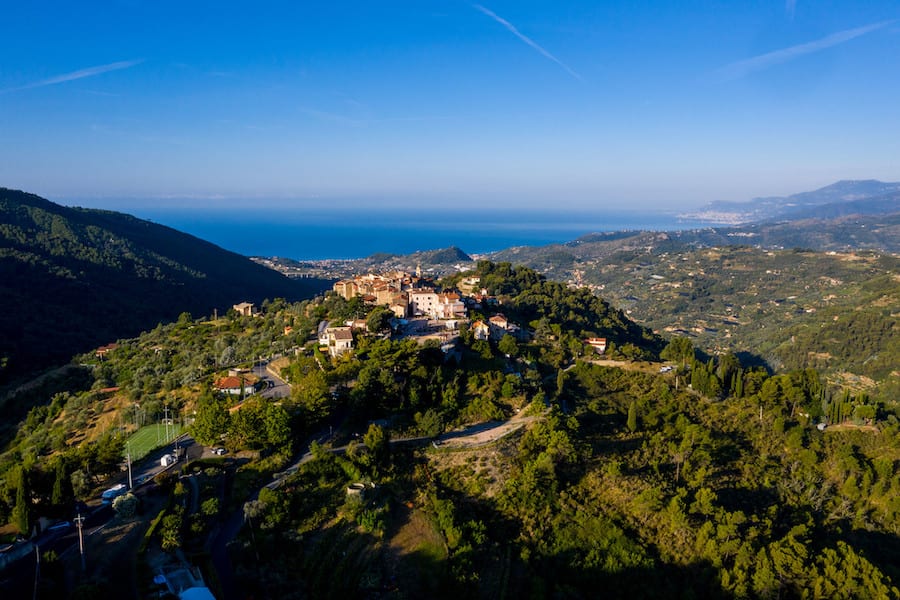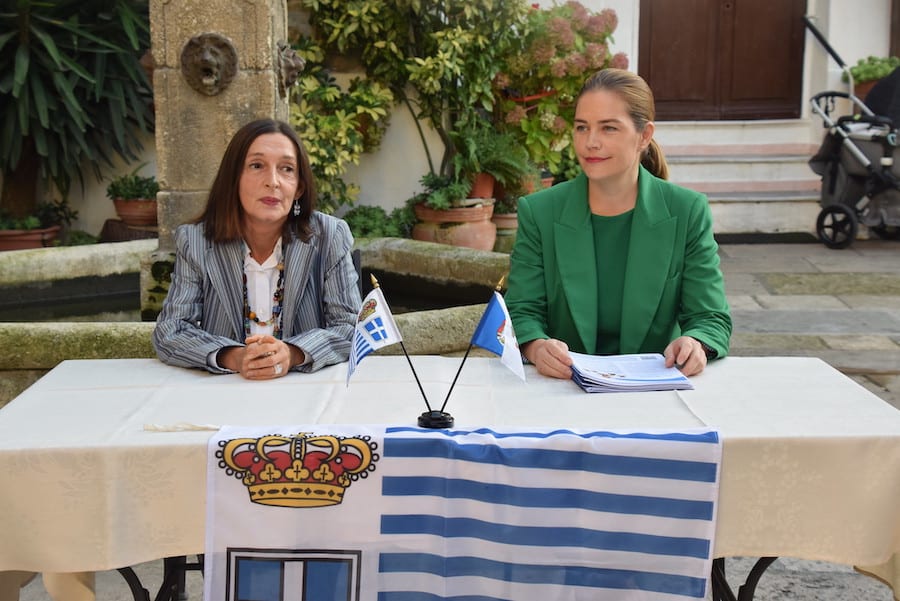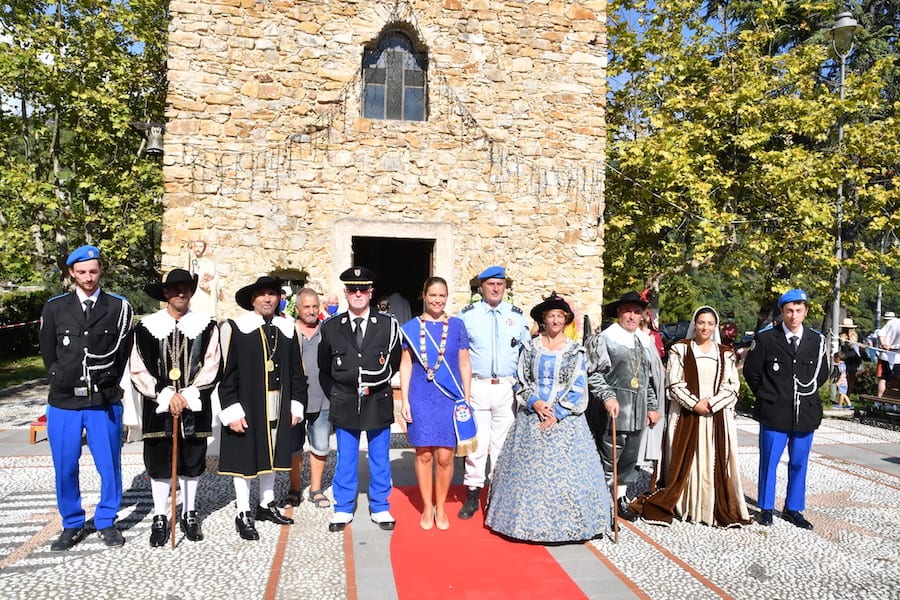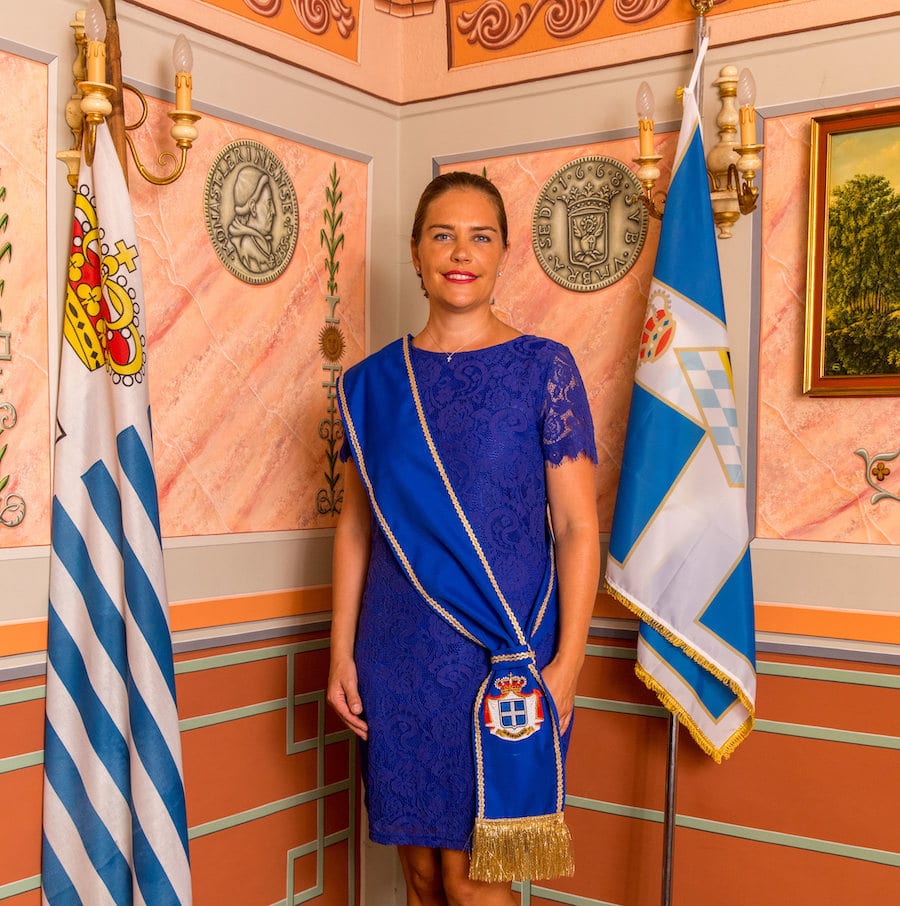This is the story of Nina, the German-born Princess of Seborga who has bold plans for the future of a principality famous for its captivating past.
There are very few villages in Italy that get the kind of publicity that is afforded to Seborga.
The “fairy tale kingdom” that sits in the hills above the Italian Riviera, where the Knights Templar are said by locals to have hidden the Holy Grail and which continues to claim independence from Italy, hit the international headlines again in August when Nina Döbler Menegatto was formally “crowned” Princess of Seborga.
“It was a very surreal moment,” Nina tells Monaco Life, “I mean, which little girl doesn’t dream of growing up and becoming a princess?”
Dressed in period costume, Nina and the townspeople gathered on a hot summer’s day for the inauguration. It was the first time the village had elected a female head of state.

The international media descended on the tiny village with its 320 inhabitants, and everyone from the Bangkok Post to the Wall Street Journal had their take on the coronation. Most reports were positive, others were slightly offensive, interpreting Seborga’s passion for tradition and fierce patriotism as sheer eccentricity.
“When I first came to Seborga in 2003, I too thought that the whole story was a little crazy,” reveals Nina. “But then I started to do some research and I discovered that we have such a unique history, and it makes Seborga very special.”
The history that Seborga holds dear was painstakingly reconstructed by the charismatic mimosa farmer Giorgio Carbone in the 1960s. Using historical documents from the Vatican archives, he discovered that in 954 the village locals ceded Seborga to the Benedictine monks of Lerins – the small island off the coast of Cannes.
Less than 100 years later, Pope Gregory VII and Emperor Henry IV elevated it to the rank of an imperial principality of the Holy Roman Empire. Seborga was sold to the Savoy dynasty in 1729, however the sale was never registered, resulting in the principality falling into what has been described as a legal twilight zone.

By 1995, the people of Seborga were sufficiently convinced by these arguments to elect Carbone as their Prince – after all, Seborga’s sovereign had allegedly been elected by the people since the Middle Ages. Carbone minted money, wrote a Constitution, and set up a cabinet and parliament. He chose a coat of arms, issued license plates and stamps with his picture on them, and selected a national anthem. He also assumed the title of His Serene Highness Giorgio I, Prince of Seborga, which he held until his death in 2009.
It is an entertaining tale, and Giorgio Carbone was undoubtedly an entertaining man. But Nina Menegatto takes her role as princess very seriously and she is keen to preserve everything about Prince Giorgio’s principality, including the luigino currency. She even intends to expand its use.
Princess Nina will also continue the fight for Seborga to be recognised as an independent principality from the country of Italy, because “nothing is impossible, I mean look at Trump and Brexit,” she says, adding, “but what I really want to do is put Seborga on the map.”

Born Nina Döbler, the 42-year-old German-native attended boarding school in Switzerland where she met her future husband, Marcello Menegatto. She moved to Monaco and earned an MBA in marketing from the International University of Monaco.
In 2003 the couple brought a property in Seborga and rebuilt some of the village’s crumbling infrastructure, establishing new businesses including a restaurant and hair salon. Based on this commitment, the people elected Marcello Prince in 2010 and elected Nina the Crown Councillor for Foreign Affairs.
“Marcello was prince for nine years, and I always backed him up. I loved Seborga, it became my family, but I never wanted to be up front,” reveals Nina. “However, life sometimes takes turns that are unexpected, and here I am.”
Marcello abdicated the throne two years into his second reign when the couple separated. “It was the people’s idea to put me forward for election. I went through a really tough time and they backed me up and gave me so much strength and love that I felt really honoured and wanted to continue the work that we had done in the past.”
Nina won convincingly, 122 votes to 69, against an unlikely opponent – the daughter of Giorgio I, Laura Di Bisceglie.

Her platform was based on the establishment of the region’s first ever health and wellness hotel – a luxury resort that will capitalise on Seborga’s position within the pristine countryside and its location just 30 kilometres from lucrative Monaco.
“This is what people are looking for now – to get away from the city and enjoy nature,” says Nina. “This is what we have and this is what we must value.”
It is a bold vision for a village that is so strongly rooted in its past. “People are unfortunately quite old in Seborga because we don’t have a lot of work to offer, and that is something that I would like to change,” explains Nina. “Not everybody approves of the new hotel, but I think it is an amazing opportunity, and we can include organic farming, a spa etc. It will provide jobs and perhaps make young people stay or come back, because right now we only have flowers, olives, and tourism.”
Seborga is already a drawcard for many Monegasque residents who have a second home in the Italian village. Even the princess, with her 14-month-old daughter, is able to split her time evenly between both principalities.

The local population actually swells to about 2,000 in summer when other second home owners and day trippers flock to the village – mostly Europeans but also a growing number of Japanese tourists.
“Seborga has such a great potential, but the infrastructure is missing. We do have very cute bed and breakfasts, we have three restaurants, and we have souvenir shops. But I think we can be more.”
Now that Nina has been officially handed the sceptre, the project has picked up pace. Private investors who had already purchased the land have placed the proposal into the hands of the Italian authorities in Genova, and “the local municipality is in favour because they know it will bring a lot of opportunity for the whole region, not just for Seborga,” says Nina.
If realised, the resort will create a new chapter in the elaborate story of this hilltop medieval village; a legacy that Nina will lovingly share with her daughter; a tale about the time she was the Princess of Seborga.
